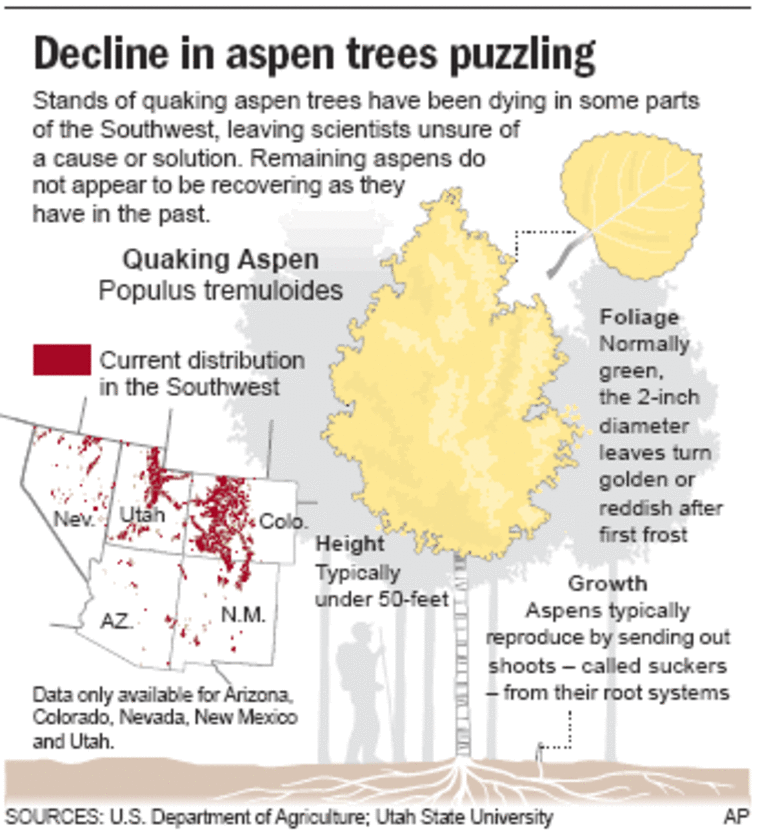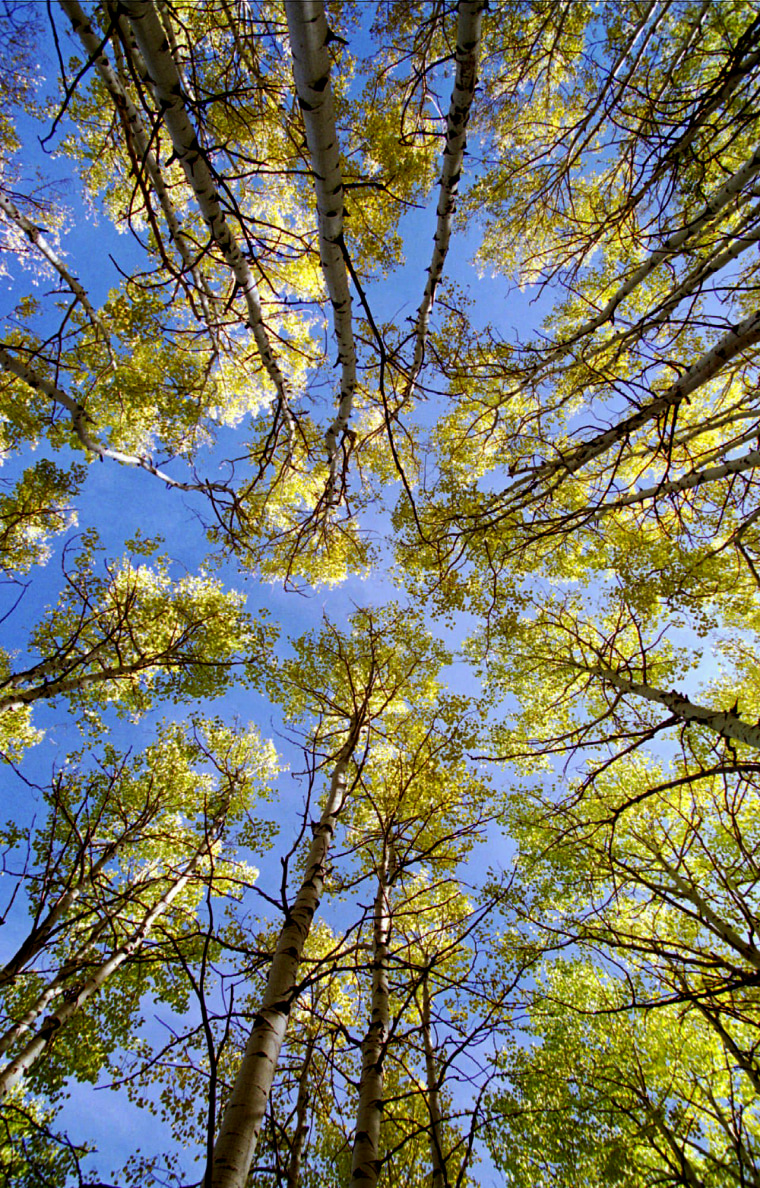Something is killing the aspen trees of the Rocky Mountain West.
Or so it seems to some scientists, who say the slender, white-bark trees that paint the hills gold every autumn are dying, leaving bald patches across the Rockies. They are scrambling to figure out what’s happening.
“As soon as we understand what’s going on, then maybe we can do something about it,” said Dale Bartos, a U.S. Forest Service ecologist based in Utah.
Bartos thinks a fungus may be to blame, while others suggest such possibilities as hungry caterpillars, drought, human interference with the natural cycle of forest fires, and resurgent herds of hungry elk nibbling saplings to death.
Aspen stands have been hard hit in southwestern Colorado, northern Arizona, and parts of Utah and Canada. Bartos said a conservative estimate is that 10 percent of the aspens in Colorado may have died or become afflicted with something in the past five to 10 years. That works out to about 560 square miles of dead or dying trees.
“We really don’t know what’s going on,” Colorado State University forester Tom Wardle said. “We will, I’m very confident, figure it out.”
Harder time bouncing back
More worrisome than the tree deaths is that aspen stands do not appear to be bouncing back from adversity the way they have in the past.
Aspen grow differently than other tree species. Rather than spreading through seeds, aspens send out shoots, called suckers, from giant, interconnected root systems. Each stand, or “clone” system, can live hundreds of years. A tree may die, but beneath the soil, the root sends out fresh shoots, and the cycle begins again.

What has Wardle and others concerned is that stands with dying trees do not seem to have the vigor they normally have in sending out shoots to replace old trees — perhaps an indication that years of drought have inflicted deep damage.
One remedy the Forest Service is considering in Colorado is cutting down older aspens in sickly stands to give younger shoots a chance to replace them.
In the wealthy resort town of Aspen, which takes its name from the tree, there are no obvious signs of a die-off, said Mateo Sandate of the Forest Service.
“We’re getting close to peak fall colors, and they’re as brilliant as I’ve ever seen them,” Sandate said Thursday.
Big die-off in Canada
In an 8,000-square-mile swath of Canada near Edmonton, aspen are virtually the only species that grows in large numbers. Canadian Forest Service researcher Ted Hogg said as many as 30 percent of the aspen in the region may have been wiped out in the past five years; he suspects a combination of drought, heat, fungus and bugs.
In northern Arizona, Forest Service plant pathologist Mary Lou Fairweather said she has seen multiple factors: A late snowstorm in 1999 crippled trees as they put out leaves for the summer, drought weakened the survivors and made them vulnerable to caterpillars and diseases, and elk gobbled up shoots before they could mature.
Another Forest Service researcher, however, said there is no conclusive evidence of any long-term decline. In fact, Claudia Regan said it appears the number of aspen in Colorado has actually increased in the past century.
If there is a decline, it might be a natural correction to human interference, University of Wyoming botany professor Dennis Knight wrote in a paper for the Forest Service back in 2001.
“Widespread disturbances caused by timber harvesting and fires in the late 1800s and early 1900s may have enabled aspen to become unusually abundant in the Rocky Mountains,” he wrote. “If aspen is now declining, the explanation may lie in natural processes. ... There is no basis to suggest that aspen is threatened globally, nor are most aspen groves likely to be lost in the near future.”
